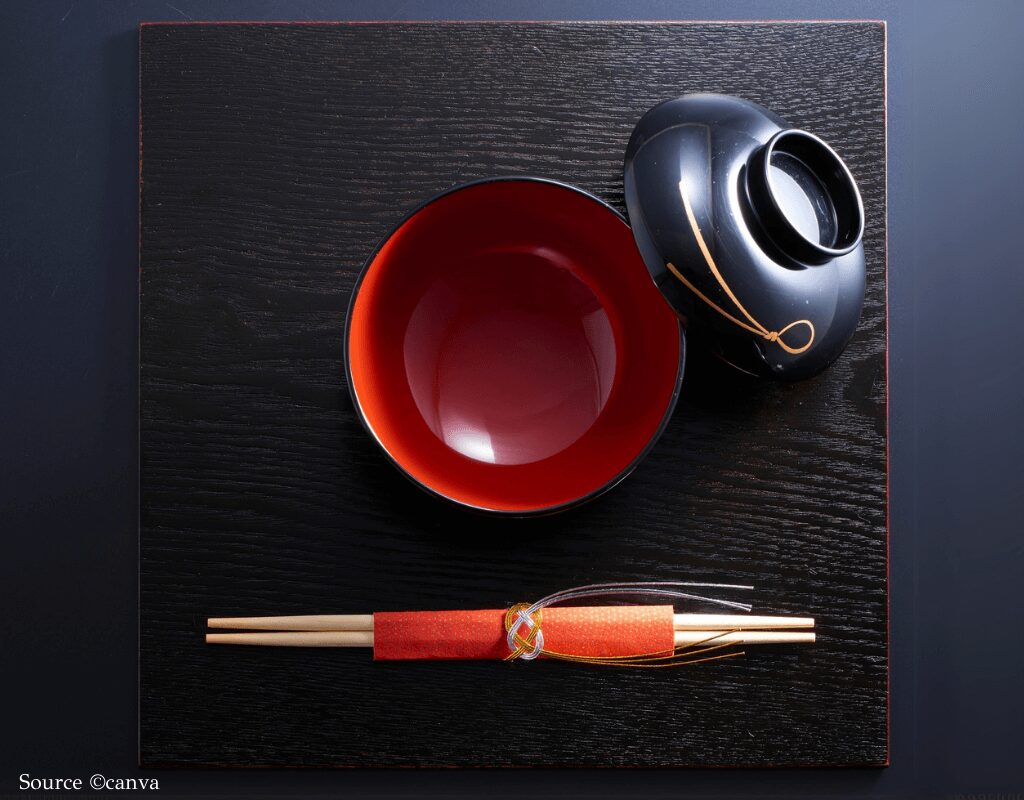Are you confident about your Japanese table manners? Japanese table manners play a key role in the nation’s rich food culture. Japanese cuisine, or washoku, is famous for its balance of flavors and beautiful presentation. In 2013, UNESCO recognized washoku as an Intangible Cultural Heritage. Knowing the proper table manners helps you appreciate not just the food, but also the cultural meaning behind each meal. Let’s dive into the basic rules and customs for enjoying meals in Japan.
For other Japanese etiquette, you can find the article here.
Table of Contents
Expert in Etiquette and Communication;
Former Shiseido Beauty Consultant. At Shiseido, gained deep expertise in hospitality, aesthetics, and understanding customers’ needs. Moved to KidZania Tokyo, a job-experience theme park for children, to share these skills. Earned the Outstanding Supervisor Award for delivering courteous service and led staff etiquette training.
Later, trained over 20,000 people in etiquette across the country. Involved in publishing, writing columns, supervising magazine articles, and appearing in the media.
Chapter 1: What is Kaiseki?
Japanese restaurants range from casual izakayas to high-end, formal dining spots. One of the most prestigious types of meals is kaiseki, a full-course meal that follows a specific order, much like French cuisine. Here’s an overview of the courses you’ll experience in a traditional kaiseki:
Sakizuke(先付) – This is the appetizer, similar to a Western starter. You enjoy the colors and beauty of the ingredients visually.
Wanmono(椀物) – A soup, typically clear broth, showcasing the chef’s skill in creating a flavorful dashi (broth) that offers a deep aroma and taste.
Otsukuri(お造り) – Fresh seafood, served as sashimi to enjoy the pure taste of the fish.
Nimono(煮物) – Stewed dishes with seasonal vegetables or ingredients like fried tofu, simple yet full of flavor.
Yaki-mono(焼き物) – Grilled dishes, which can include fish, scallops, shrimp, or even meat.
Agedemono(揚げ物) – Lightly battered and deep-fried dishes made from seasonal ingredients, served with dipping sauces or salt.
Mushimono(蒸し物) – A steamed dish, with chawanmushi (savory egg custard) being the classic choice. You can enjoy it with a spoon or gently stir it as you drink.
Sunomono(酢の物) – A refreshing dish with a sour note, often made with pickled plum or vinegary miso to cleanse the palate.
Oshokuji(お食事) – Rice, miso soup, and pickles (tsukemono) are served as the main dish.
Mizukashi(水菓子) – The final course, a dessert with fresh fruits or sweet treats.
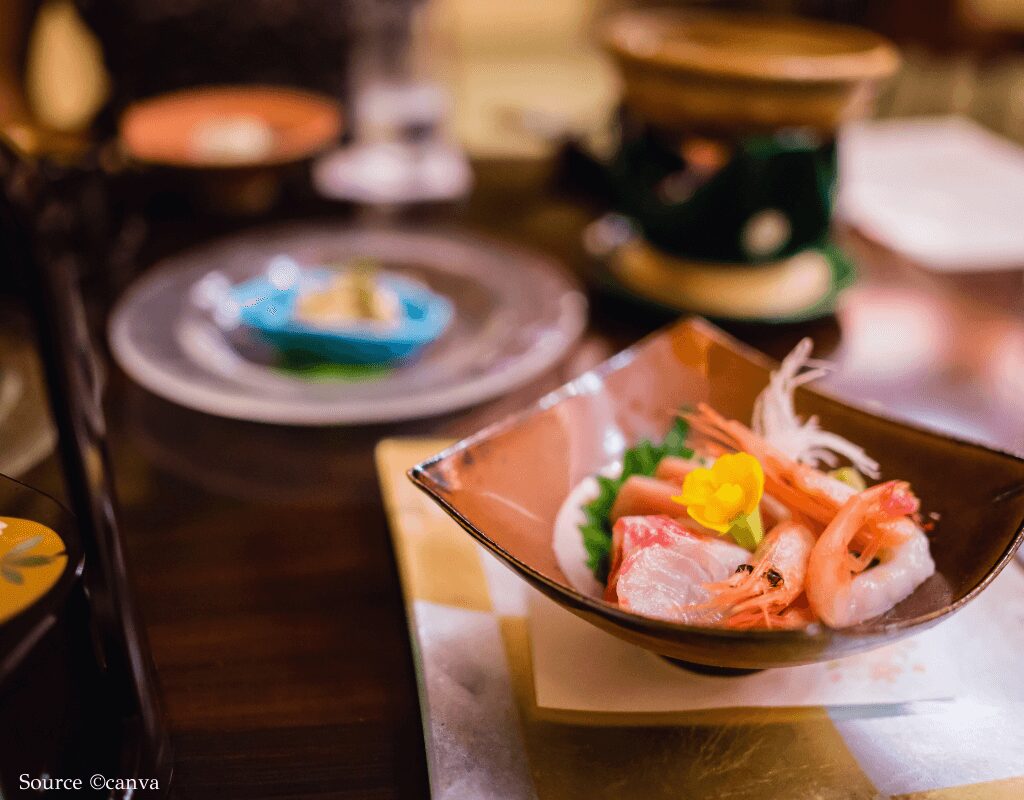
Chapter 2: Japanese Table Manners / Before Sitting Down:
#Dress Code
When visiting a Japanese restaurant, dress appropriately for the occasion. Avoid denim and revealing clothes. If you need to sit on the floor, it’s better to wear a longer skirt. To enjoy the aromas of Japanese food, don’t wear strong perfume. Avoid big accessories like long necklaces or large rings that could touch the dishes.
#Shoes and Seating
In traditional rooms (ozashiki), you must take off your shoes. Make sure your shoes are clean inside and that your socks or stockings look neat. Even in summer, do not go barefoot. Be careful not to dirty the tatami mats. After taking off your shoes, place them in the shoe rack. If the staff says, “Please leave them as they are,” you can let them arrange the shoes for you.
Here are four important rules when sitting in a tatami room:
Sit in Order of Seniority
Let elders or guests sit in the seat of honor. For further details on seating arrangements, please refer to this guide.Don’t Step on the Threshold
The threshold (shikii) is the part of the door frame. Stepping on it is considered disrespectful, as it symbolizes stepping on the head of the household. It can also damage the structure of the house over time.
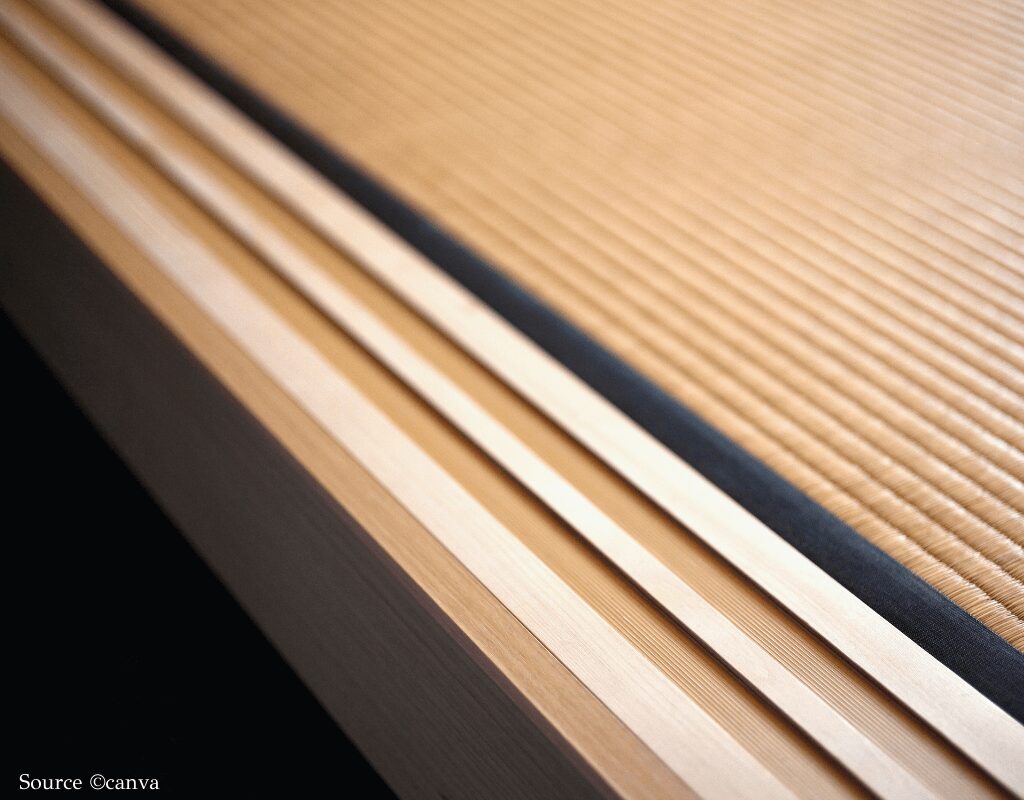
Don’t Step on the Edge of the Tatami
The edge of tatami mats may have family crests woven into them, so stepping on the edges is rude.Don’t Step on the Cushion
Never step on a cushion (zabuton). To sit properly, first kneel on the tatami, then gently place your knees on the cushion and sit down.
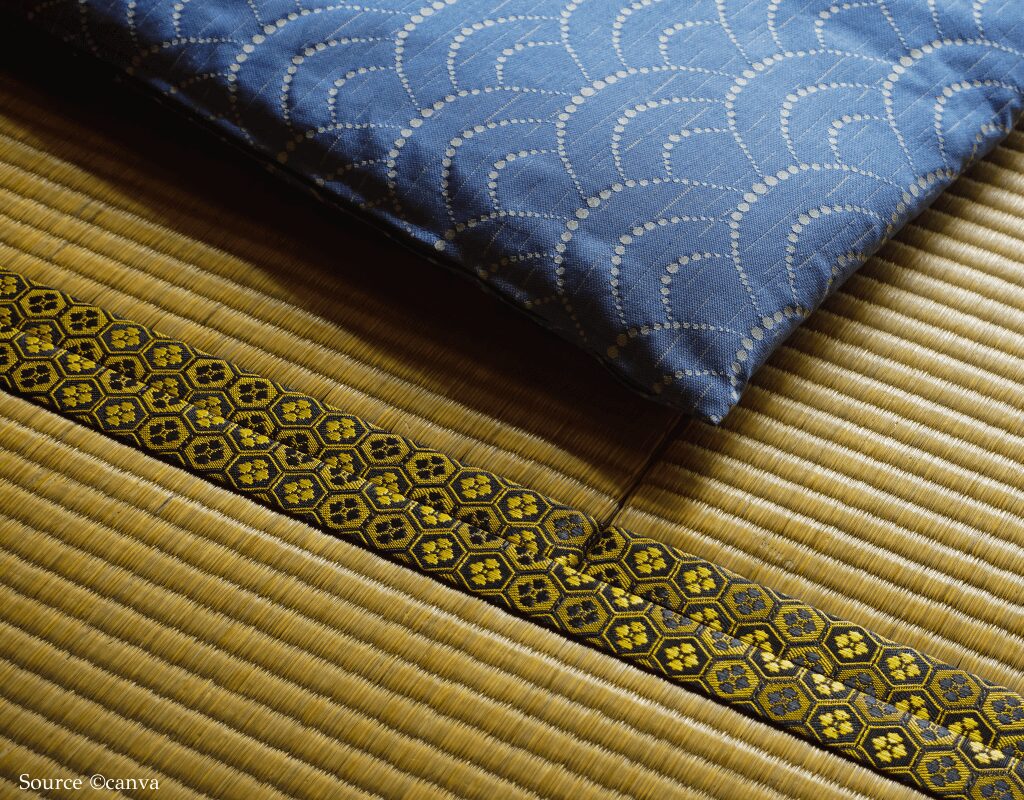
#Table Seating
Just like in a traditional tatami room, follow the seating order based on seniority. Sit with a straight posture.
#Using the Oshibori (Wet Towel)
The oshibori is a unique Japanese custom used to clean your hands before a meal. It also has spiritual significance, originating from temizu (ritual hand washing) before visiting a shrine. Just as people purify themselves before receiving blessings, you clean your hands with the oshibori to prepare for the meal.
Therefore, do not use it for anything other than cleaning your hands. Use the oshibori only for your hands. Don’t wipe your mouth or clean the table with it. After using it, fold it with the used side facing in and place it on the tray.

Chapter 3: Japanese Table Manners / The Basics
#Posture and Elbows
Sit with your back straight and avoid slouching. In a traditional tatami room, sit in a seiza position on the cushion. At the table, do not rest your elbows on the surface. When using chopsticks or holding dishes, keep your elbows close to your body to avoid bumping into others.
#Soup Dishes
For lidded bowls, open the lid and place it upside down to the right of the bowl. Hold the bowl with both hands and take a moment to enjoy the aroma. Sip the soup and eat the ingredients one at a time. Try not to make noise while drinking. When sipping, dip the tips of your chopsticks into the bowl—this looks polite and also helps keep ingredients in place.
For shellfish in soup, use chopsticks to take out the meat while holding the bowl. If it’s difficult to remove, set the bowl down and use one hand to hold the shell while using chopsticks. Put empty shells back into the bowl. When finished, close the lid and place your chopsticks on the holder.
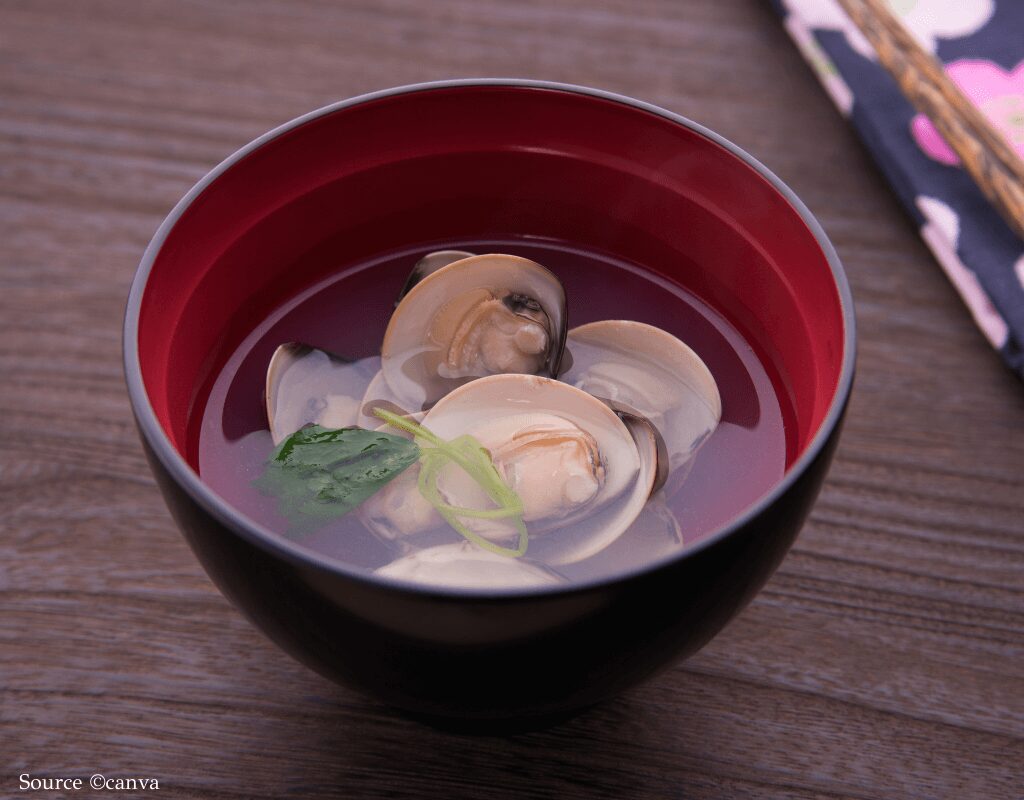
#Holding Dishes
In Japanese dining, it is proper etiquette to hold small dishes, such as bowls, small side dishes, soy sauce dishes, and dipping sauce bowls for tempura. However, do not lift large plates, like those for grilled fish or assorted sashimi and tempura. A simple rule to follow is: if the dish is larger than your palm, keep it on the table. The main exception is rice bowls for donburi, which you can lift while eating.
#Eating Sashimi
Pour a small amount of soy sauce into a small dish and dip the sashimi into it. It’s not appropriate to pour soy sauce directly onto the sashimi.
You can use the shiso leaves or chrysanthemum flowers served with the sashimi as condiments. Sprinkle a small amount over the soy sauce.
For wasabi, place a small amount directly on the sashimi. This way, you can control the amount and enjoy the flavor.
Another tip for a delicious sashimi experience is to eat the milder-tasting fish first, followed by stronger-tasting ones:
- White fish (such as snapper, flounder)
- Red fish (such as tuna, bonito)
- Fatty fish (such as toro, salmon)
Avoid letting soy sauce drip from the sashimi when using chopsticks, as this is considered bad manners (known as “tear chopsticks”). Hold the small dish with soy sauce to prevent spills.
The daikon and carrot served with sashimi help cleanse your palate and aid digestion. You can eat them by wrapping the sashimi with them or lightly dipping them in soy sauce.
#Eating Tempura
Tempura is often served with seasonal ingredients stacked high. To keep the presentation intact, start eating from the front.
The crispy texture is the best part. Lightly dip tempura into the sauce for the best flavor, but don’t soak it too much.
If you’re adding grated daikon or momiji-oroshi (spicy grated daikon), add a little at a time to enjoy it throughout the meal.
When eating with salt, don’t dip the tempura directly into it. Instead, pinch a small amount of salt and sprinkle it over the tempura.
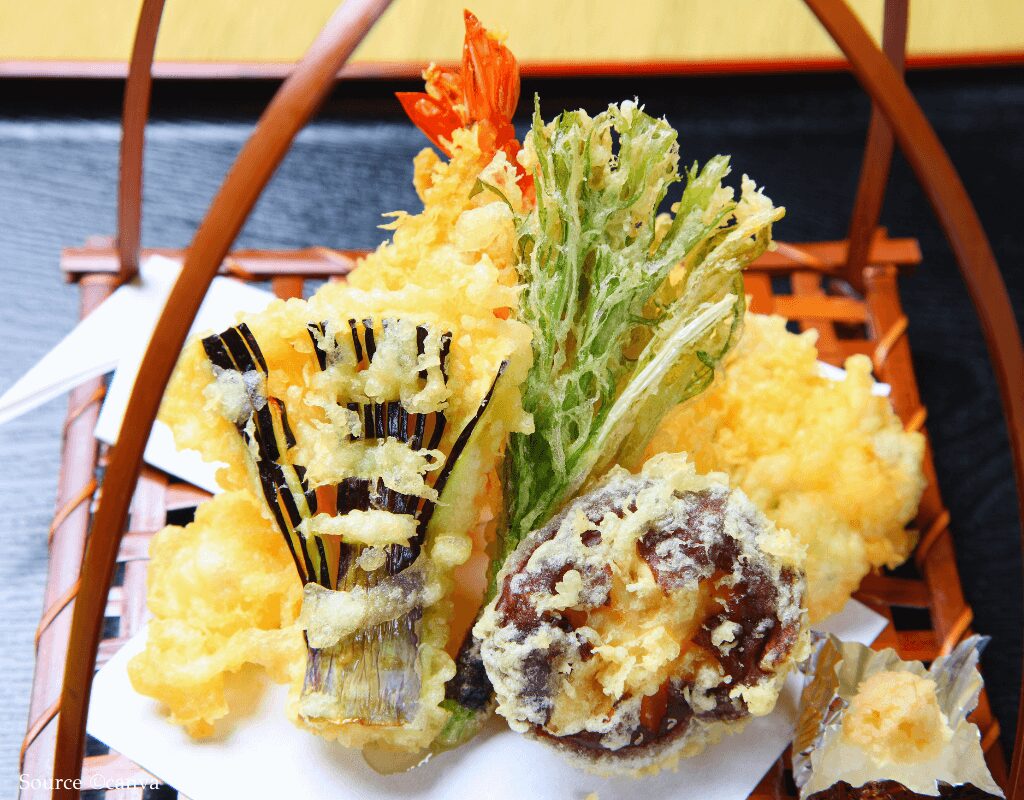
Chapter 4: "Itadakimasu" and "Gochisousama deshita"
In Japan, food is seen as “receiving the life of the ingredients.” Therefore, expressing gratitude through the phrase “itadakimasu” is important. This includes thanking nature, the farmers and fishermen, the people who handle distribution, the chefs who prepare the meal, the makers of the dishes, and those dining with you. The essence of Japanese culture is to appreciate all those involved in the meal.
The phrase “gochisousama deshita” carries the same sentiment. “Gochisou” means to run around or be busy, reflecting the effort that goes into gathering ingredients and preparing food. The term “gochisou” is sometimes used to refer to the meal itself. By adding “sama,” it conveys respect and gratitude for the meal and everyone involved. To show this appreciation, remember to say these phrases with a bow and hands together in a gesture of thanks.
Chapter 5: Handling Shared Dishes
In Japanese meals, dishes like “yosenabe,” “sukiyaki,” and “shabu-shabu” are often shared from a large pot. When serving, use special serving chopsticks, which are bigger than eating chopsticks and usually provided.
It is impolite to use your own chopsticks to pick up food directly from the shared dish, even with family or close friends.
The person sitting closest to the pot should serve portions for everyone. When serving, try to include a variety of ingredients so everyone can enjoy different flavors. For example, in “yosenabe,” make sure to serve some seafood, tofu, and vegetables for everyone.
If someone has food allergies or dislikes, it’s polite to ask, “Is there anything you can’t eat?” before serving.
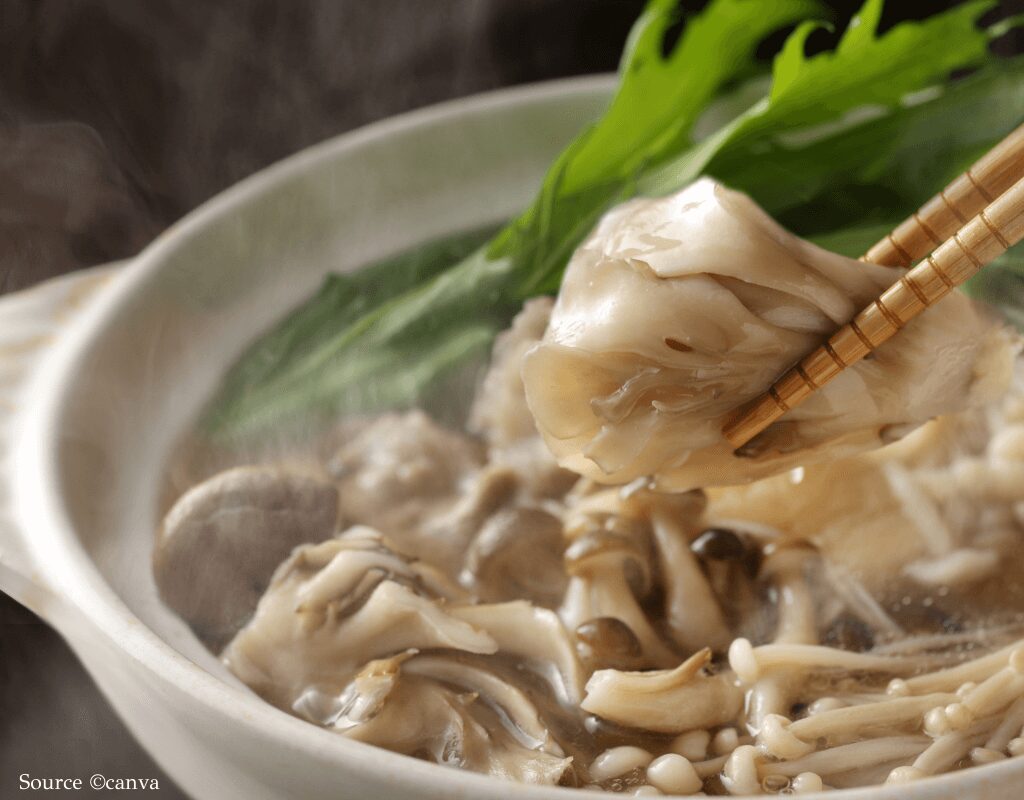
Chapter 6: Other "No-Go" Behaviors
a. Don’t Use a “Tezara”
A “tezara” is when you place your palm under the food you’re holding with chopsticks to catch any drips or spills. This is considered impolite. If you’re worried about spills, use a small plate to catch any liquid.
b. Don’t Put Half-Eaten Food Back on the Plate
Once you’ve bitten into food, don’t put it back on the plate. Instead, cut your food into bite-sized pieces before eating.
c. Don’t Stack Empty Plates
After finishing your food, leave the plates as they are. In particular, in high-end restaurants, plates are delicate works of art, and stacking them can cause damage.
d. Match Your Eating Pace with Others
In Japan, harmony is important. Try to eat at the same pace as those around you. If food is served one dish at a time, don’t start eating just because your dish arrived. Wait until everyone’s food is served before you begin eating.
Chapter 7: Summary
Japanese cuisine is a unique food culture that values not just taste, but also presentation, manners, and the changing seasons. To truly savor Japanese food, it’s important to engage all five senses. Take your time to appreciate the story behind each dish and enjoy the experience slowly.

